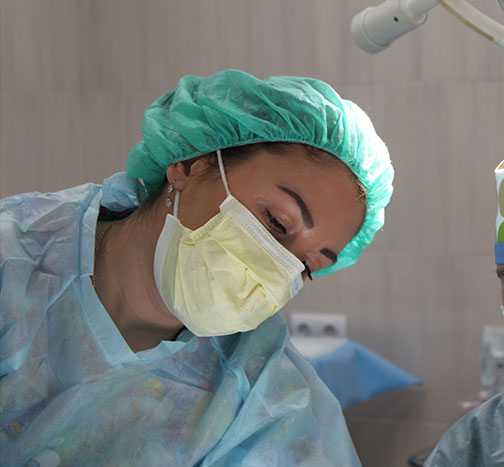
Welcome to the ultimate guide for plastic surgeons seeking to harness the power of digital marketing. In today’s fast-paced digital world, having a robust online presence is crucial for attracting new patients, establishing credibility, and growing your practice. This comprehensive guide is designed to provide invaluable insights, proven strategies, and practical tips to navigate the ever-evolving digital marketing landscape. From optimizing your website and leveraging social media to implementing effective advertising campaigns and managing online reviews, this guide will equip you with the tools you need to thrive in the digital realm and achieve long-term success as a plastic surgeon. Get ready to elevate your practice to new heights and connect with your target audience meaningfully and impactfully.
Plastic surgery SEO encompasses the strategies and techniques used to optimize a plastic surgery practice’s website and online presence, enhancing its visibility and maximizing the potential to attract prospective patients through search engines such as Google. This involves employing targeted keywords and phrases relevant to plastic surgery, optimizing website content and structure to appeal to search engines, and adhering to other recommended practices for website optimization.
Plastic surgery SEO involves various specific tasks, including:
- 1.
Conduct thorough keyword research
to identify the most popular search terms for plastic surgery in your practice’s location. - 2.
Optimize your website’s content
by incorporating keywords naturally and engagingly. - 3.
Implementing on-page and off-page optimization techniques
to improve your website’s ranking in search engine results. - 4.
Establishing high-quality backlinks
from reputable websites to showcase your practice’s authority and credibility.
- 5.
Generating and sharing valuable content
such as blog posts and social media updates, to attract and captivate potential patients. - 6.
Ultimately, plastic surgery SEO aims to enhance the visibility and accessibility
of your practice’s website, leading to a higher number of qualified leads and increased revenue.
Expanding your Plastic Surgery SEO:

Understanding the impact of search engine rankings on click-through rates is crucial. The first organic result receives a significantly higher click-through rate, approximately ten times more than the tenth position. This emphasizes the importance of implementing effective SEO strategies for plastic surgery practices. By investing in SEO, you can surpass and outperform your competitors, who occupy the top positions in search results.
Whether you’re new to SEO or seeking innovative methods, this comprehensive guide on plastic surgery search engine optimization equips you with the essential knowledge to harness the potential of this potent tool in your online marketing arsenal.
Plastic surgery SEO begins with your website, which serves as the cornerstone for all your marketing endeavors, both online and offline. Ask yourself: Is your website optimized to load quickly, provide an excellent user experience on mobile devices, and exhibit the essential elements that Google considers when ranking sites higher in search results?
Undoubtedly, your plastic surgery website is pivotal in your overall marketing strategy. Whether you use traditional advertising methods like print or TV, potential clients will inevitably visit your website to gather more information about your services. Similarly, if they discover your practice while searching online, your website will be their initial introduction to your expertise and offerings.
In addition to achieving high rankings in search results, the initial impressions your website creates are of utmost importance. You only have one opportunity to capture the attention of potential patients, and if they experience slow loading times or need help to grasp how your services can address their needs quickly, they will likely leave your site and seek alternatives.
Ignoring the significance of your website is not an option.
It serves as the foundation for implementing a comprehensive SEO strategy.
Don’t miss out on the opportunity to supercharge your online presence – schedule your free digital marketing evaluation with us today and unlock the potential for exponential growth!
Factors Considered by Google to Rank Your Plastic Surgery Practice Website

Essential Elements for Optimizing Your Website:
- 1.
Page Speed:
The loading speed of your website’s pages significantly influences search engine rankings and user experience. - 2.
Core Web Vitals:
This encompasses page loading time, user interaction duration, and visual stability, which are vital metrics Google considers for evaluating the overall user experience. - 3.
SSL Certificate:
An SSL certificate establishes a secure connection between your website and visitors, ensuring data protection and building user trust. - 4.
URL Structure:
Incorporating relevant keywords into your URLs aids in rankings and creates a logical hierarchy for search engine crawlers to index your website effectively. - 5.
Conversions:
Including strategic calls to action (CTAs) throughout your website’s pages at every stage of the sales funnel maximizes user engagement and boosts conversion rates.
Achieving optimal rankings requires harmoniously aligning technical elements with the dynamic Google algorithm. While technical aspects play a vital role in plastic surgery SEO, presenting content that captivates and resonates with patients and potential patients is equally important. Click here to read 35 powerful tips for a SEO driven medical website.
Organic SEO for plastic surgery practices encompasses four primary strategies:
- 1.
Keyword Research:
This involves identifying relevant terms to drive substantial website traffic while considering achievable competition levels. - 2.
Website Optimization:
A well-optimized site should:- Be user-friendly and easy to navigate.
- Feature-optimized content regularly updated to cater to your target audience and support your keyword strategy.
- Have optimized back-end tags that align with the page content.
- 3.
Local SEO:
This specialized approach focuses on attracting patients in your area and is a crucial component of your overall plastic surgery SEO strategy. - 4.
Link Building:
Building high-quality, authoritative backlinks from relevant websites is essential for your practice’s online presence.

Essential SEO Terms for Plastic Surgery Website Optimization
Before delving into the specifics, familiarize yourself with the following key terms:
- 1.
On-Page:
Refers to all the elements on your website, including content, site layout, structure, and metadata. - 2.
Content:
Encompasses service webpages, blog posts, videos, infographics, and images that are accessible to site visitors. - 3.
Off-Page:
Includes external factors like directory listings, link building, and citation building. - 4.
Technical SEO:
Addresses technical aspects such as site speed, structured data markup, site security, and other technical tasks associated with plastic surgery SEO. - 5.
Keyword Research: Understanding how potential patients search for your services is crucial. This involves identifying the specific words they use and comprehending their intent as search engines like Google interpret it. It’s important to consider where patients may be in their decision-making journey and tailor your keyword strategy accordingly.
Determining the right keywords requires time and consideration. By incorporating relevant keywords strategically, you can improve your rankings and elevate your plastic surgery practice in search results.
Finding Keywords Targeting Your Best Prospects
Utilize a reliable keyword research tool to uncover the specific terms people use to find your services. Consider investing in a subscription for a sophisticated tool or seek assistance from a professional plastic surgeon SEO company to conduct this research effectively.
Optimal Plastic Surgery Keywords:
To achieve effective results, it is crucial to select plastic surgery keywords that meet specific criteria:
- 1.
High Relevance:
The keywords should closely align with your practice and services, ensuring they attract the right audience. - 2.
Decent Traffic:
Choose keywords with a consistent or satisfactory search volume level, indicating a potential audience seeking those terms. - 3.
Manageable Competition:
While generic terms like “surgeon” or “plastic surgeon” may have high traffic, they are highly competitive. Targeting more specific and long-tail keywords is recommended to increase effectiveness and reduce competition.
Focusing on long-tail keywords, typically phrases consisting of three to five words, allows you to target terms with more manageable competition. This approach enables you to capture the attention of a specific audience and enhance your chances of ranking higher in search results.
When optimizing your website, it’s crucial to consider the search terms prospective patients will likely use when seeking your services. For instance, if you offer rhinoplasty services and wish to showcase before and after pictures, you must incorporate relevant keywords that align with these offerings.
Here are some potential keywords to consider in this scenario:

- Rhinoplasty before and after
- Nose job transformation
- Cosmetic surgery results
- Rhinoplasty outcomes
- Before and after rhinoplasty photos
By integrating these targeted keywords into your website’s content, you can increase the chances of attracting prospective patients who specifically seek rhinoplasty services and are interested in viewing before and after pictures to assess the results. This strategic approach enhances visibility and helps you effectively connect with your target audience.
It’s vital to consider terms with both commercial and research intent during your keyword research.
By integrating these targeted keywords into your website’s content, you can increase the chances of attracting prospective patients who specifically seek rhinoplasty services and are interested in viewing before and after pictures to assess the results. This strategic approach enhances visibility and helps you effectively connect with your target audience.
It’s vital to consider terms with both commercial and research intent during your keyword research.
- 1.
Easier Ranking:
Commercial intent keywords typically have less competition, making it easier for your website to rank higher in search results. - 2.
Higher Conversion Rates:
Searchers using commercial intent keywords actively seek services rather than just information. As a result, these keywords tend to generate higher conversion rates.
On the other hand, research intent keywords often begin with words like “how” or “why,” indicating a search for information. These individuals may have yet to plan for plastic surgery but could be gathering knowledge for future procedures or assisting someone else in their research.
By targeting both commercial intent and research intent keywords, you can cater to different user needs and capture the interest of potential patients at various stages of their decision-making journey.
When creating informative content, the quality and value you provide are paramount. By effectively engagingly educating online visitors, you increase the likelihood of them sharing your content or linking to it. This enhances your rankings and amplifies your online presence and visibility.
Once you have conducted your initial keyword research, you can utilize the results to develop a comprehensive keyword strategy. This strategy should be continually monitored and adjusted as necessary to ensure it aligns with the evolving landscape of search engine optimization.
Analyzing your competitors’ use of keywords is essential in developing a successful plastic surgery SEO strategy. Understanding how your competitors leverage keywords in a competitive industry like plastic surgery can provide valuable insights for outranking them. Here’s what you need to do to outperform competing practices:
- 1.
Investigate competitor keyword usage and their success: Research and analyze the keywords your competitors use to rank well in search results. Identify the keywords they are targeting and thoroughly analyze their performance.
- 2.
Prioritize relevant keywords in the sweet spot: Look for keywords that balance high search volume and low competition. These keywords offer the best opportunity to attract qualified traffic to your website.
- 3.
Strategically use long-tail keywords: Incorporate long-tail keywords, which are longer and more specific phrases, into your content strategy. These keywords typically have lower competition and attract highly targeted traffic.
- 4.
Think beyond the obvious: Consider variations and different spellings of relevant terms. For example, if you offer medical spa services, include words like “medical spa,” “medspa,” and “med spa.” Google is increasingly adept at recognizing these variations, but using them strategically can still benefit your SEO efforts.
When choosing a domain name, aim for a keyword-rich domain that aligns with your plastic surgery SEO goals. However, be cautious not to cross the line into spammy practices. If you already have a domain name, you can skip the section about auditing your current website.
Remember that there is a significant demand for information about celebrities and their procedures, which may influence keyword research trends in plastic surgery. Stay aware of these trends and consider incorporating relevant content if it aligns with your practice’s strategy and target audience.
Optimizing your plastic surgery website is crucial to ensure you’re making the most of the available ranking signals.
Take the time to review your website and identify areas for improvement. Here are some critical steps to consider:

- 1.
Review and optimize your content: Evaluate your existing content to determine if it can be updated, expanded, or further optimized to align with your keyword strategy. Ensure that your content provides value to visitors and is relevant to their search intent.
- 2.
Check and update links: Double-check all the links on your website, both internal and external, to ensure they are working correctly. Fix any broken links and update outdated links as necessary. Well-maintained and relevant links contribute to a positive user experience.
- 3.
Update title tags: Pay attention to them, as they are essential for SEO. Ensure that your title tags accurately reflect the content of each page and incorporate relevant keywords where appropriate.
- 4.
Add missing meta descriptions: Meta descriptions summarize your page’s content in search engine results. If any pages lack meta descriptions, take the opportunity to add them, as they can improve click-through rates and provide additional context to searchers.
- 5.
Enhance internal linking: Incorporate internal links throughout your website to guide visitors to related content and keep them engaged for longer. Internal linking improves user experience and helps search engines discover and index your pages more effectively.
Additionally, consider the impact of page speed on user experience and SEO. Slow-loading pages can lead to high bounce rates and lower search rankings. Test your website’s speed using tools like Google Insights, which provides insights and suggestions for improving page speed performance.
By following these optimization steps, you can enhance the overall quality of your plastic surgery website and improve its visibility in search engine rankings.
If the audits reveal any issues, you will receive guidance on how to address and resolve them. If you encounter technical challenges, our team is here to provide assistance and support.
To enhance the speed of your mobile pages, consider implementing Google’s accelerated mobile pages (AMP) framework. However, it’s essential to understand the advantages, disadvantages, and potential challenges associated with AMP implementation.
Now is also the perfect time to review and improve your website’s structure, which we will discuss in the next section. Creating a logical and user-friendly architecture that prioritizes elements essential for patient acquisition is crucial. For instance, carefully consider what should be included in the main navigation bar, ensuring easy access to services for prospective patients. Place the services selection prominently on the far left for quick and intuitive navigation.
Why is this important? You increase the chances of converting searchers into patients by facilitating easy access to service pages and ensuring their high ranking in search engine results. This strategic placement also signals authority to Google. Case studies have shown that site users on websites with this structure tend to visit the services pages before exploring other types of pages.
By optimizing your website’s structure, enhancing user engagement, and prioritizing a seamless user experience, you can effectively guide prospective patients toward your services and increase conversions.
To optimize your plastic surgery website for SEO, targeting relevant keywords that align with your services is essential. Some examples of plastic surgery SEO could include tummy tucks, breast augmentation/reduction, and facelifts.
In addition to keyword optimization, prioritizing a high-quality user experience (UX) is crucial. Creating a website that makes visitors comfortable and engaged is increasingly essential for plastic surgery SEO. Studies have consistently shown a significant correlation between visitor engagement and higher rankings, indicating that top-ranking sites are often those where visitors actively engage with the content.
While Google has stated that engagement metrics are not a direct ranking factor, they are considered in more complex and indirect ways within the algorithm. It’s important to understand that having good engagement on your site can positively influence its performance.
To improve the user experience (UX) on your plastic surgery website, consider the following strategies:
- 1.
Treat every page as a potential entry point:
Recognize that each page on your site has the potential to be the first point of contact for visitors. When people find your site through organic keywords, they will likely land on the page that ranks highest for their search terms. For example, if someone searches for “nose job near me” and you have optimized your rhinoplasty service page and FAQs with that term, they will likely enter your site via the rhinoplasty page. Ensure that each page provides relevant and valuable information to engage visitors from arrival. - 2.
Strategically add new pages:
Instead of cluttering the main navigation menu with excessive buttons, consider creating sidebar navigation elements on specific pages. This approach allows site visitors to delve deeper into particular topics of interest. For instance, if you want to highlight a new benefit of your cleft lip surgeries, you can create a blog post and a dedicated page that links to your main cleft lip reconstruction service page. This helps users navigate your site effectively and find the information they seek. - 3.
Include appropriate site maps:
Implementing site maps helps search engines quickly discover and index your website’s content. Site maps provide a structured overview of your site’s pages, making it easier for search engines to crawl and understand your content. Refer to Google’s guidelines on site maps for best practices and recommendations.
Establish yourself as an authority by leveraging your plastic surgery content and blog.
Maintaining an active blog and consistently publishing optimized content is crucial for successful cosmetic surgery SEO and reconstructive surgery SEO.
Here are the benefits of having a blog:
- 1.
Boost your rankings:
Google’s freshness ranking signal favors websites regularly updating their content. By consistently adding new blog posts, you can improve your chances of higher rankings in search results. - 2.
Target research-based keywords:
Blogs allow you to incorporate research-based keywords into your content. These keywords often attract significant traffic and provide an opportunity to engage with topics that may not fit directly into your service pages. - 3.
Drive traffic to your site:
Blogs are valuable information sources, attracting visitors seeking insights and guidance. By providing valuable content, you can drive targeted traffic to your website. - 4.
Earn inbound links:
Engaging and informative blog posts can attract inbound links from other websites. These links can enhance your website’s authority and credibility, positively impacting your SEO efforts. - 5.
Share practice news:
Use your blog to share updates and information about your surgical practice. Whether introducing new procedures, highlighting success stories, or discussing industry trends, blogging lets you connect with your audience and keep them informed.
Harness the power of your blog to establish expertise, expand your reach, and boost your SEO.
Your blog is a valuable tool for showcasing your knowledge and positioning yourself as a trusted authority in plastic surgery. By consistently publishing high-quality content that addresses relevant topics and provides valuable insights, you can attract a broader audience and establish credibility among your readers.
Furthermore, optimizing your web pages strategically can significantly improve their rankings in search engine results. Pay attention to critical elements such as title tags, meta descriptions, and keyword usage to ensure your pages align with search engine algorithms. By incorporating relevant keywords naturally and optimizing these elements effectively, you can increase the visibility of your web pages and drive more organic traffic to your site.
Remember, a well-executed blog strategy and strategic optimization go hand in hand. Combining informative and engaging blog content with optimized web pages can enhance your overall SEO strategy and strengthen your online presence in the competitive landscape of plastic surgery.
In addition to having a well-written and strategically optimized home page, it’s essential to focus on the following pages to achieve high rankings on Google:

- 1.
Plastic surgery services landing page:
Create a comprehensive page highlighting your plastic surgery procedures and emphasizing why patients should choose your practice. Include clear calls to action and links to individual pages dedicated to each specialty. Use relevant keywords that align with how people search for these services, incorporating geographical modifiers when appropriate. Ensure each page features various contact methods, such as online forms, email, and phone. - 2.
Location landing pages:
If your practice has multiple offices or surgical centers, develop a landing page with links to each location. Create individual pages for each site, including the city and state and unique contact information. Optimize these pages with geo-targeted keywords to attract local searches. - 3.
Compelling About Us page:
Connect with potential patients by crafting an About Us page that resonates with them. Avoid excessive medical jargon and instead communicate in a relatable manner. This allows visitors to connect with your practice on a personal level while still conveying your expertise. - 4.
Strategic testimonials and reviews:
Incorporate testimonials and reviews strategically throughout your website. These social proof elements influence people’s decisions and can enhance trust in your practice. Place them strategically to showcase positive patient experiences. - 5.
Checklists, bulleted lists, and FAQ page:
Integrate checklists and bulleted lists throughout your site, including an FAQ page. Google may feature this content in the Answer Box, which appears at the top of organic search results. Optimizing this content increases the likelihood of achieving a prominent position zero ranking.
- 6.
Keyword optimization and content length:
Optimize each page for relevant keywords and aim for a minimum of 1,000 words for service pages. While there is no magic number, Google tends to reward longer content. Optimize the page title (H1 tag) using a single label per URL. Utilize subheadings (H2 tags) to improve readability and guide visitors. Incorporate keywords naturally within the body copy, avoiding excessive keyword usage that may be perceived as spammy. Implement internal linking between pages to provide a seamless navigation experience and enhance SEO.
By following these optimization techniques, you can increase the visibility and rankings of your web pages, attracting more potential patients to your plastic surgery practice.
Optimize your back-end for improved plastic surgeon SEO.
Although back-end tags are not visible to site visitors, they significantly contribute to optimizing your search engine. Consider the following scenario: A potential patient searches for “cosmetic plastic surgeon in Tallahassee, FL” on Google. Here are some essential tips to keep in mind:
When creating a page or post, ensure that you enter optimized text to appear in the URL’s title tag and meta description tag. While Google may not always utilize the provided information, well-crafted tags are usually used.
Plugins can simplify adding text to back-end tags, with the title tag typically limited to around 60 characters and the meta description tag to approximately 160 characters. Adding excessive characters is not helpful and can even be counterproductive.
Title tags carry significance as a ranking factor in Google, although their impact may have decreased compared to the past. Include relevant keywords in your title tags within a reasonable character limit to avoid truncation. Although the meta description tag does not directly affect rankings, it is crucial to entice users to click and establish the initial connection with potential patients.
Make your meta descriptions stand out in the search engine results pages (SERPs) by crafting compelling and attention-grabbing descriptions. When appropriate, consider including a local phone number to provide convenience and reinforce your local presence. Additionally, utilize keywords in image descriptions through ALT tags.
By optimizing your back-end tags effectively, you can enhance your plastic surgeon SEO, increasing your pages’ visibility and click-through rates in search engine results.
Enhance your website’s visibility with schema markup:
We wrote about the importance of a Schema markup in this article, an HTML markup enhancer, can significantly improve the effectiveness of your plastic surgeon SEO by providing additional information to Google about your practice, including your name, address, and reviews. By implementing schema markup, your practice may be recieve a review snippet in search results, boosting your online presence. While implementing schema markup requires a more complex process than adding back-end tags.
Unlock the power of local SEO for plastic surgeons and dominate your city’s search results.
Local SEO is a specialized digital marketing strategy that aims to attract new patients within your geographic area. Our local SEO services for plastic surgeons ensure that Google recognizes all the relevant “local signals” used to rank your website, increasing your competitiveness in your city. As an example, consider our optimized internal linking approach, where we created a blog post highlighting the benefits of long-form blog content:
Since each office or surgical center is considered local to its surrounding area, having a uniquely optimized page on your site for each location is crucial. By implementing effective local SEO campaigns that outperform your competitors, you can secure a highly coveted position in the three-pack—the top three local search results displayed on search engine results pages.
Boost your rankings in local searches with these effective strategies:

- 1.
Claim and optimize your Google My Business (GMB) listing:
Start by creating or claiming your GMB listing and ensuring it is complete and accurate. Even if you have a website, having a well-maintained GMB listing is essential. Follow the instructions to verify your listing and take full advantage of this powerful tool. - 2.
Ensure consistent NAP information:
Ensure that your website’s name, address, and phone (NAP) information and accompanying schema matches the details on your GMB listing. Consistency is critical, as discrepancies can negatively impact your local search rankings. Consider this the modern-day Yellow Pages, where inaccuracies can cause significant problems. - 3.
Address NAP discrepancies:
If you discover any inconsistencies with your NAP information, take immediate steps to rectify them. It is crucial to provide accurate contact information and driving directions, particularly for the map section of Google’s local search algorithm. If you encounter incorrect NAP details in online directory listings, contact the respective directories and request corrections. Google references your GMB/site information against other directories, and inconsistencies can erode trust. - 4.
Generate customer reviews:
Create a unique link that directs customers to where they can leave reviews for your plastic surgery practice. Google reviews play a pivotal role in local SEO rankings. Encourage satisfied patients to leave honest reviews about their experiences. However, it is essential to note that you should never ask for positive reviews or engage in fake reviews. Maintaining authenticity and integrity is paramount. Additionally, avoid leaving negative thoughts about your competitors.
- 5.
Develop a review response plan:
A well-defined strategy for responding to positive and negative reviews is crucial. Engage with your patients and address their feedback professionally and promptly. Managing customer reviews effectively can significantly enhance your online reputation and improve customer engagement.
By implementing these strategies, you can significantly enhance your rankings in local searches and strengthen your plastic surgery practice’s online presence. For more information on leveraging Google Reviews and customer engagement marketing, consult additional resources available.
Continuously track, analyze, enhance, and iterate for optimal results.
Regularly monitor the performance of your plastic surgery SEO efforts to gauge your success. Utilize tools like Google Analytics and Search Console and monitor your Domain Authority (DA) score to gather valuable data. Measure metrics such as traffic growth, page-specific traffic, inbound links, and their quality. These insights will help you understand the effectiveness of your SEO strategy.
Start by creating a comprehensive baseline report that captures your current website performance. Then, monthly, collect new data and compare it with the previous reports. Analyze the trends, patterns, and changes to identify areas for improvement.
Based on your findings, fine-tune your SEO strategy accordingly. Make adjustments, such as optimizing underperforming pages, refining keyword targeting, or enhancing content quality. Continuously test and experiment with different techniques to see what works best for your plastic surgery practice.
Remember that SEO is an ongoing process, and improvement is an iterative cycle. You can steadily enhance your online presence and drive better results by monitoring, measuring, and making informed optimizations. Stay proactive and adaptable to the ever-evolving landscape of search engine optimization.

